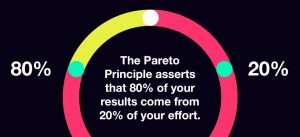Recently there’s a lot of evidence of high profile strategy failures, whether it’s the health care overhaul in Congress, the inability of the Organization of Petroleum Exporting Countries to bolster oil prices by cutting supplies, or disappointments from hot start-up initial public offerings like photo-sharing app maker SNAP and meal-kit service Blue Apron.
It’s not that these organizations lack strategy. It’s that they haven’t produced results. The difference is critical; these groups had a clear vision or purpose –although it’s up for debate whether the strategies were good ones –but weren’t able to execute their vision. They lacked an ability to translate from a vision into a practical solution.
Republicans had a plan to repeal and even to replace parts of the health care law. OPEC has production quotas for each of its members and SNAP and Blue Apron have designs for their respective futures. The problem: A plan is meaningless unless there is a clear system for how to make decisions and solve problems. An organization is not its leadership alone; the leader can only achieve his or her goals if she creates a system for buy-in.
That means that leaders have to know not only what to do but also how to carry it out so that each individual responsible for participating in the plan’s delivery knows the process and its practices; The leader needs a clear roadmap for what to do, when, in what way, why and with whom, both inside and outside of the organization. Doing that effectively means that leaders need to pay homage to incentive structures to ensure that employees or other stakeholders align with the priorities of the organization as a whole. Therefore good decision making, to my thinking, needs to combine the social performance side of human behavior with the metric aspect of decision making.
Positive organizational change needs a collaborative backbone married with a rigorous research process to collect and vet hypotheses and data. What this means in practice is that a leader may want to execute a strategy with a decision-making system that uses the following tools:
- A perspective taking a process that investigates the incentives and motives of stakeholders to create buy-in and solve problems holistically.
- A rigorous research process that collects data and tests assumptions against evidence
- An audit trail that encourages transparency and records a team’s thinking, assertions, and facts making it easier for employees and stakeholders to understand how and why tasks were completed the way they were. It also allows for the capture of corporate knowledge and allows the success of one team to impact the whole organization.
These three steps together enable organizations to work collaboratively without barriers in a non-threatening way. The perspective-taking acknowledges and clarifies the different vantage points that exist within a team or organization and the rigorous research demands that evidence and not assertion ground the work. Together this kind of a system combines critical thinking with performance. In short it enables a strategy to have the potential to succeed.
Let’s take the OPEC situation for example. Each country that participates in the cartel is apportioned a specific petroleum production quota based upon supply and demand figures in an effort to control and boost market prices. The problem: What is good for OPEC may not always align with the incentives of the member nations that depend upon the oil revenues in part to support national spending programs. This misalignment can explain much of the cheating. Social welfare programs help nations maintain stability and when production is cut so are the underlying programs that rely upon the funds. The current priorities of the sovereign nations trump the longer-term benefits of potentially higher prices in the future.
The strategy is not bad per se, all member nations sharing the burden of cutting supplies. And OPEC is likely well aware of the competing interests. However, might OPEC better address the problem if it investigated a cost-benefit analysis that is much closer to break-even for what each nation needs internally to meet spending demands? Is OPEC bringing together the social performance side of human behavior with the data? Getting beyond that we think we know to actually laying out what matters to each stakeholder and what we can prove may increase the likelihood that a strategy succeeds –even if that success has previously eluded us.
The bottom line here is not that OPEC shouldn’t have tried to cut production or that it should have taken a different strategic path. What I am saying is that had OPEC gone through a method of research and analysis that focused on human behavior and incentives as well as thoughtful data collection paired with an audit trail of its thinking then it would have understood better how to make its decisions effectively: OPEC might have chosen a different level of production cuts.
Sometimes translating from a vision to a practical solution means making a different decision; sometimes it means a different implementation of the same decision. My suggestions apply equally to both situations, one taking a different path; the other taking the same path better.
For a similar analysis of SNAP click here.
Business & Finance Articles on Business 2 Community
(94)
Report Post






